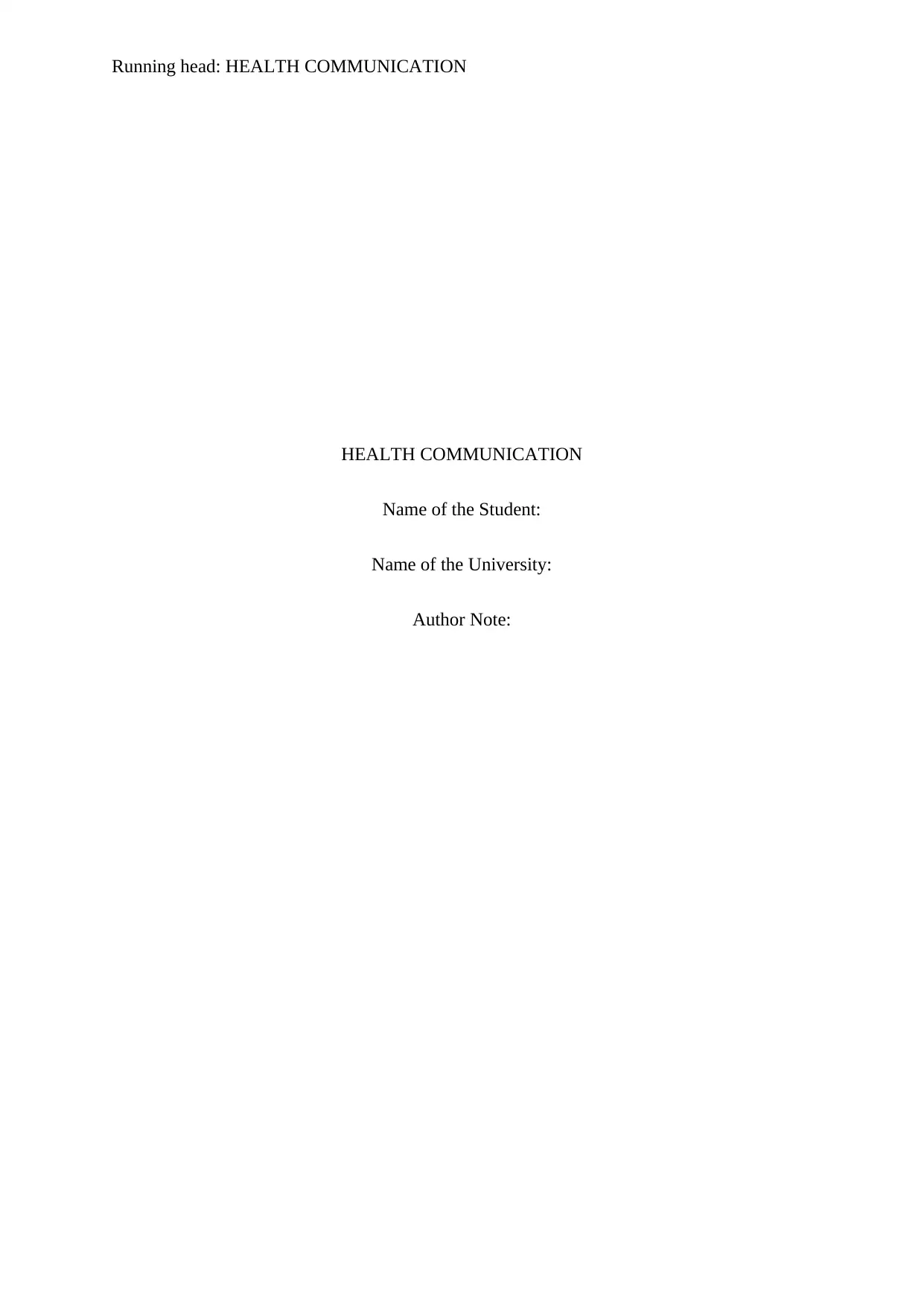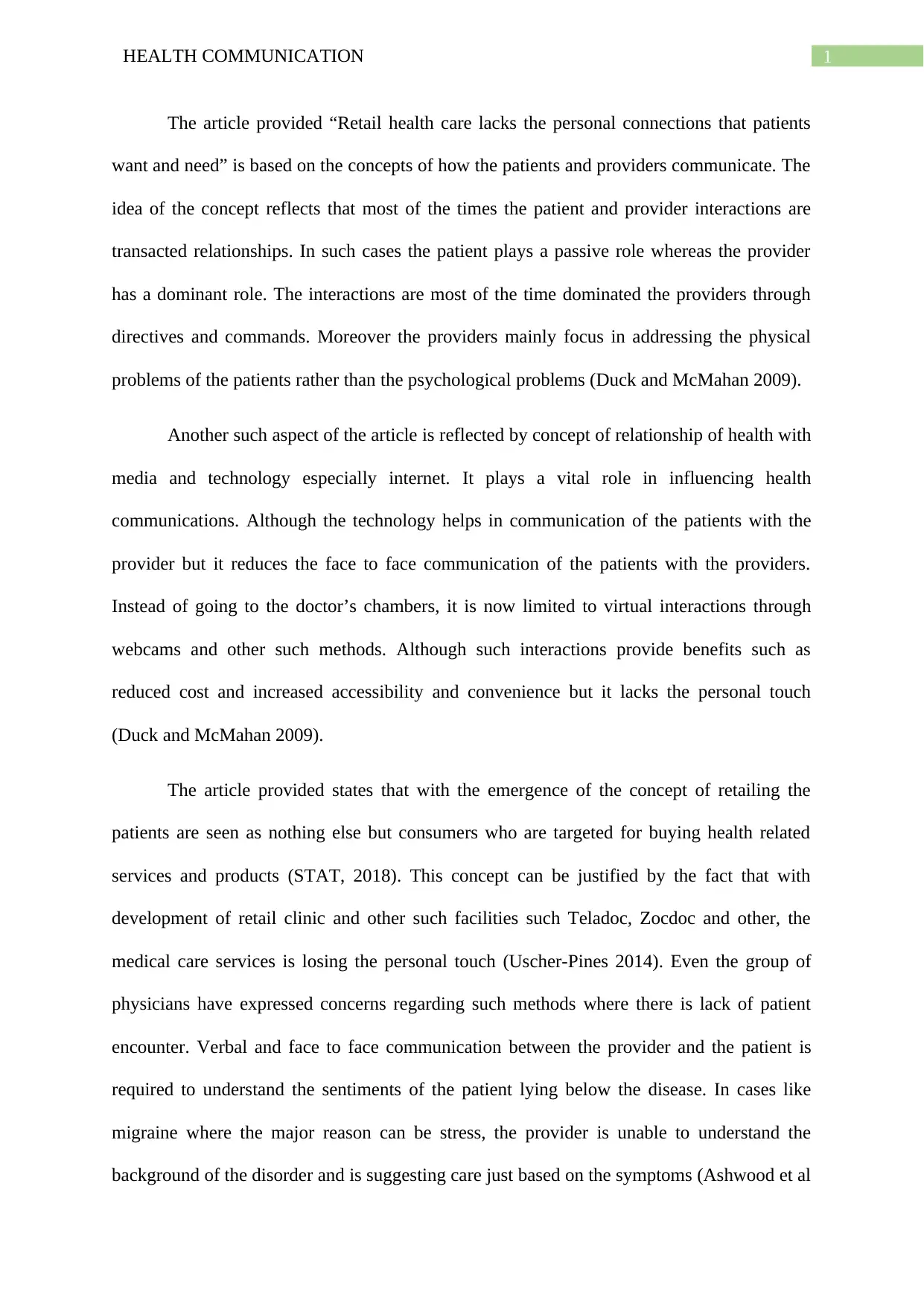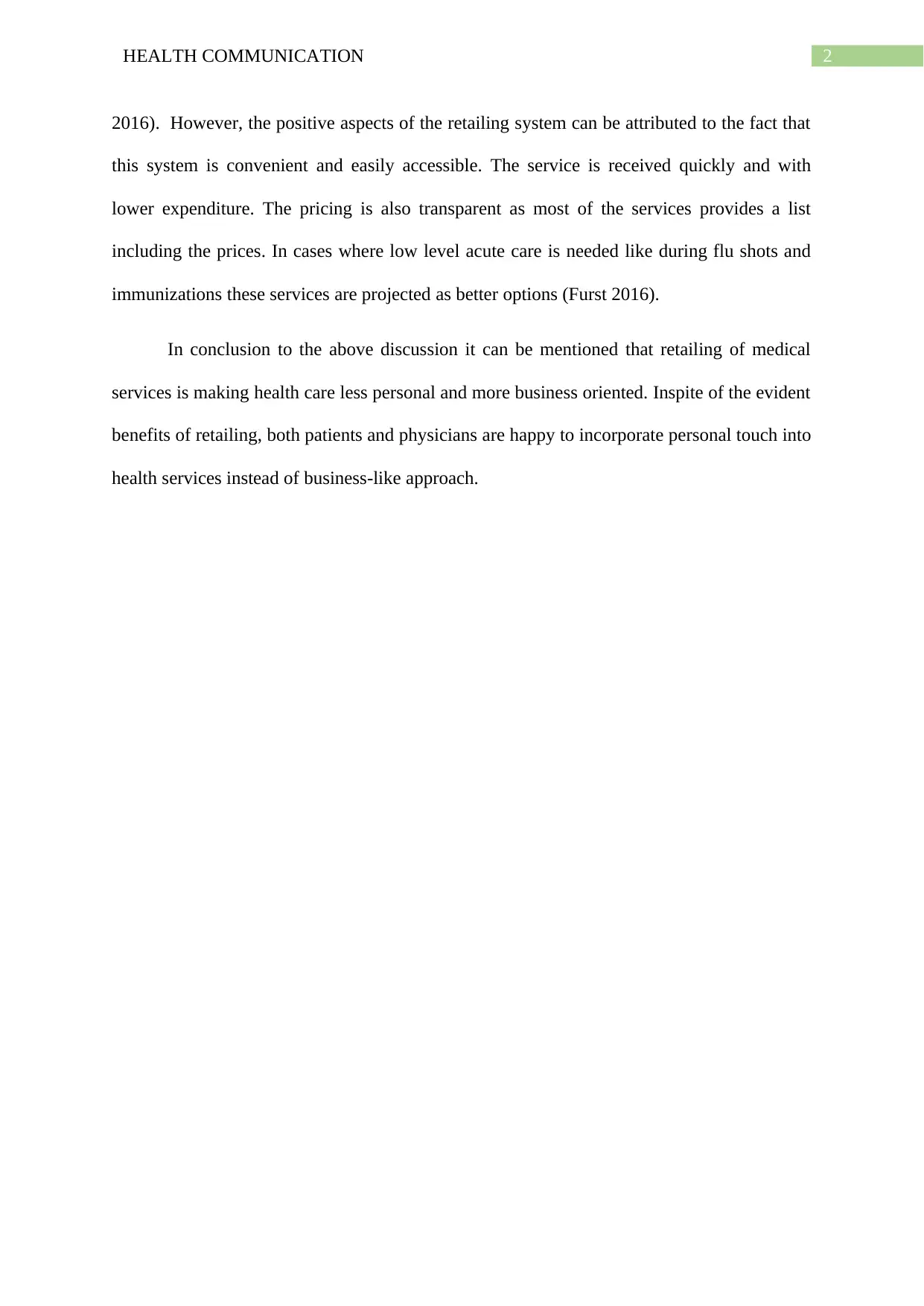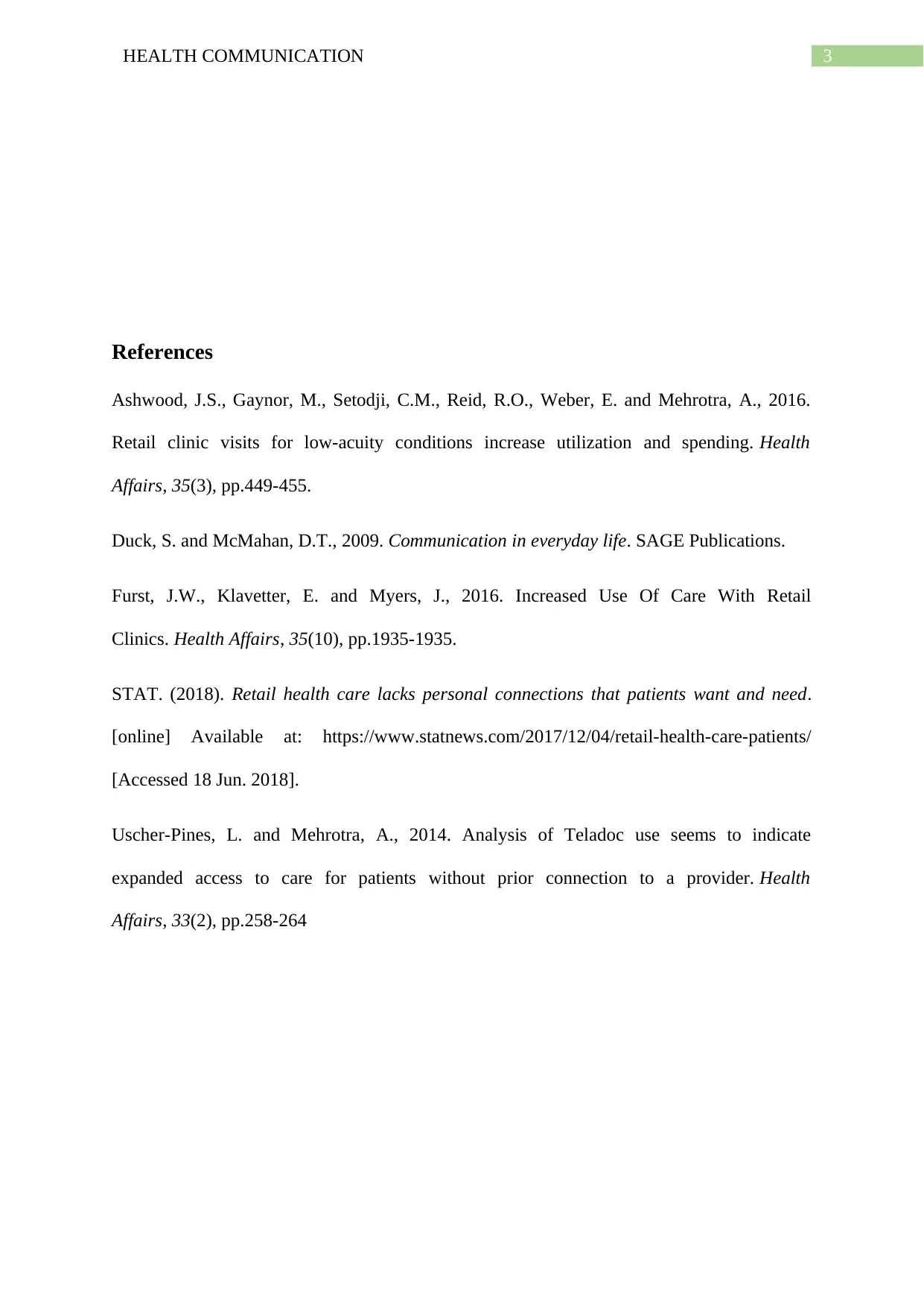Retail Health Care Lacks Personal Connections for Patients
VerifiedAdded on 2023/06/11
|4
|708
|317
AI Summary
The article provided discusses how retail health care is making health care less personal and more business-oriented. It highlights the importance of personal touch in health services and the negative impact of technology on face-to-face communication between patients and providers.
Contribute Materials
Your contribution can guide someone’s learning journey. Share your
documents today.
1 out of 4










![[object Object]](/_next/static/media/star-bottom.7253800d.svg)